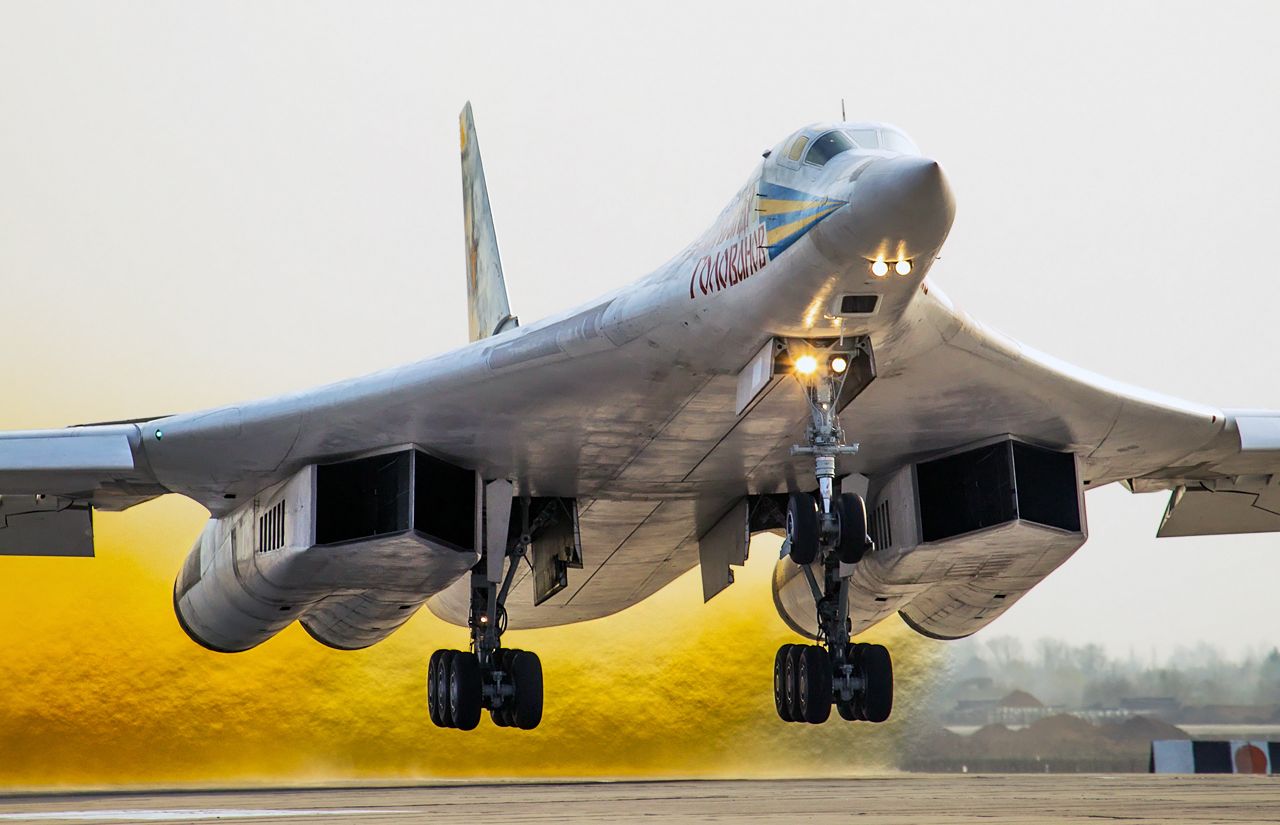The upgrade of the Tu-160 (NATO reporting name: Blackjack) strategic bomber fleet to Tu-160M2 standard is ahead of schedule, expert Vladimir Tuchkov writes in an article on the Svobodnaya Pressa news portal.
Russian Aerospace Force Commander-in-Chief Colonel General Victor Bondarev has said the maiden flight of the Tu-160M2 is slated for 2018. He mentioned a different date – 2019 – not that long ago.
The official tests of the first production-standard missile-carrying bomber are due to be complete in 2021. Then, the Kazan Aircraft Plant will start the full-rate production of the type. The Defense Ministry is intent on buying 50 aircraft.
Until recently, the plant in Kazan has overhauled the bombers and upgraded them to Tu-160M standard. The Tu-160 has the largest payload, highest speed, altitude and power-to-weight ratio and longest combat radius among the bombers. The US Air Force B-2 Spirit stealth bomber surpasses it in low radar observability only. This is not critical to the Tu-160, however, since its long range and Kh-101 and Kh-102 missiles capable of covering about 5,000 km afford it the standoff capability.
The upgrade is designed to enable the bomber to maintain its leadership for at least 20 years, with its service life expected to be 30 years at the least.
The designers are using only the Tu-160’s airframe for the upgrade. Even the engines powering the newer version will be different. Russian engine manufacturer Kuznetsov in the city of Samara has developed a new variant of the Tu-160’s organic NK-32 engine, the NK-32-02 featuring improved performance, even though the elder engine is still top-notch and fitted out with an electronic control system. Its thrust in full afterburner stands at 25,000 kgf. The new engine will be manufactured using advanced machinery and latest technologies.
The Tu-160M2’s electronic systems are of open architecture, i.e. any advanced system will be able to replace an obsolete one by being merely plugged into its jack.
Vladimir Mikheyev, with Radio Electronic Technologies Corp., spoke of the capabilities of the upgraded aircraft’s electronics: “Each of the Tu-160M2’s electronic units will be able to handle all tasks at hand, if need be, e.g. the electronic warfare system will be able to assume the functions of other control systems. If a computer fails, the system allows the resources of the whole plane to be used for dealing with the problem.”
This means increased survivability of the bomber’s electronic systems. Coupled with the high survivability of the mechanical systems owing to the parallelization of the servos and pipelines and the minimization of the fire/explosion hazard, this will increase the strategic bomber’s reliability even more.
The characteristics of the systems earmarked for the Tu-160M2 are classified, but the increase in the quality they are expected to produce is to be huge. Russian Deputy Defense Minister Yuri Borisov says the combat effectiveness of the Tu-160M2 will be 2.5 times higher than that of its predecessor.
The systems equipping the missile-carrying bomber will include the Novella-NV1-70 phased-array radar, K-042K-1 navigation system and ABSU-200-1 autopilot designed specifically for it. The aircraft will get a sophisticated fire control system that, in turn, will boost the effectiveness of the world’s longest-range cruise missiles – the Kh-101 and Kh-102. The plane will have the ‘glass’ cockpit relieving its crew of routine tasks.
The advanced bomber production schedule is unknown. If the Kazan Aircraft Plant churns out five bombers a year, the Long-Range Aviation will receive its 50 aircraft in the early 2030s. However, the upgrade work is not limited to the Tu-160. The Tupolev Design Bureau is upgrading the Tu-95MS (Bear-H) as well. The bomber is being fitted with Kuznetsov-tailored NK-12MVM turboprop engines, new propellers and heavily modernized electronics. Its Obzor-MS radar has been replaced with the latest phased array-equipped Novella-NV1.021. The aircraft is being equipped with a ‘glass’ cockpit through the introduction of the SOI-021 data display system and with the sophisticated Meteor-NM2 defensive aids suite. The upgrade of the Tu-95MS was kicked off in 2013, with the resultant version designated as Tu-95MSM.
At present, there are 60 Tu-95MS and Tu-95MSM bombers in the Long-Range Aviation’s inventory. They are expected to remain in service until 2040 and to start to be complemented by the modernized Tu-160M2s from 2023, expert Vladimir Tuchkov writes in his article published by the Svobodnaya Pressa online news agency.










